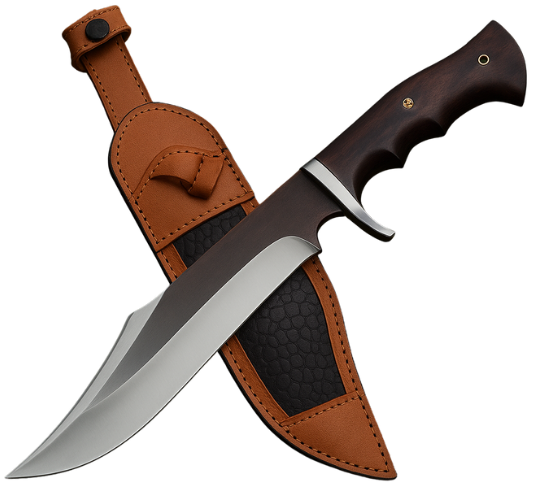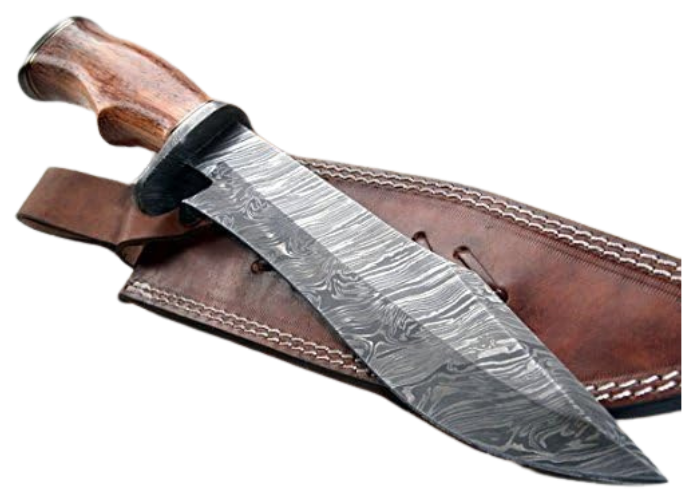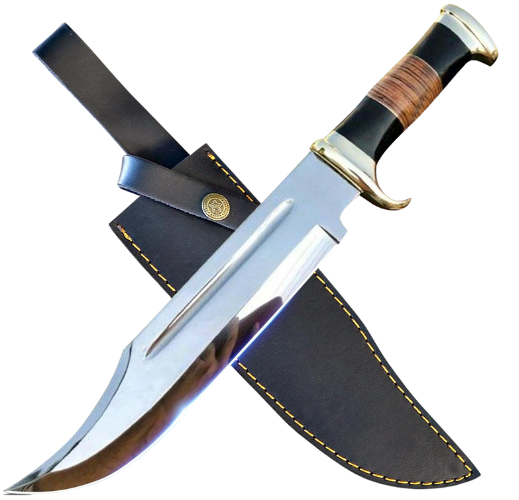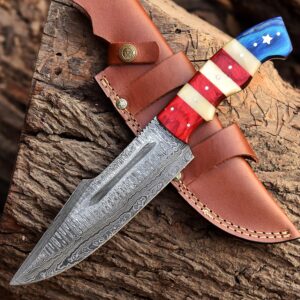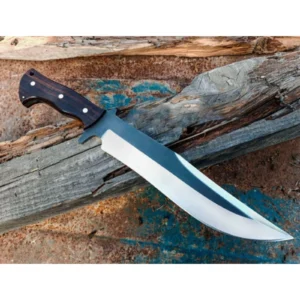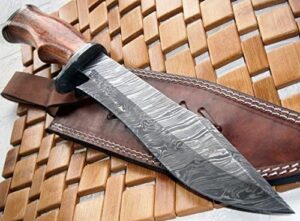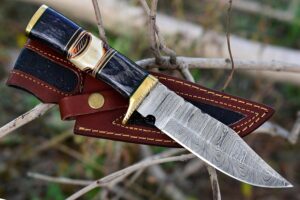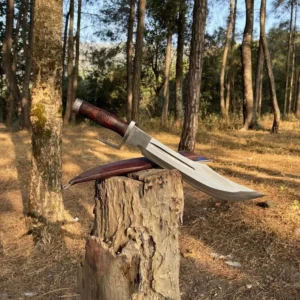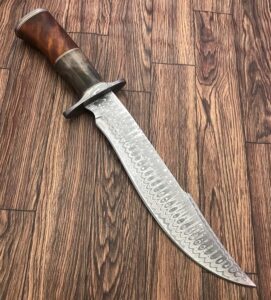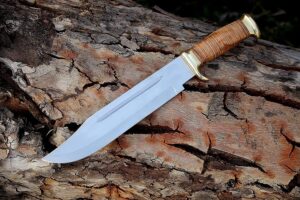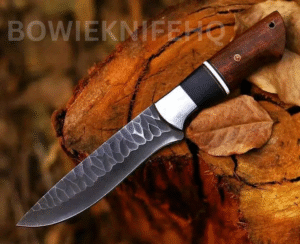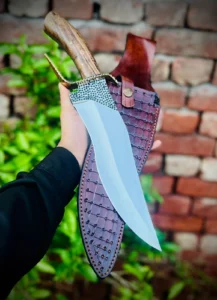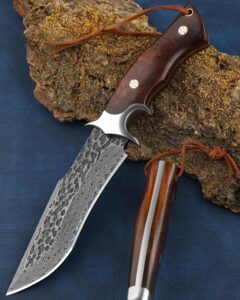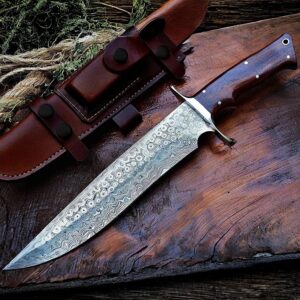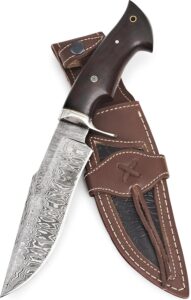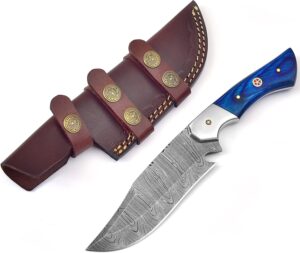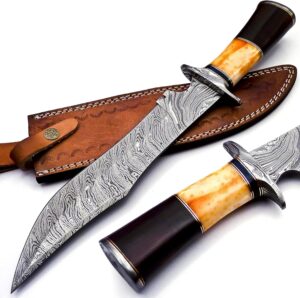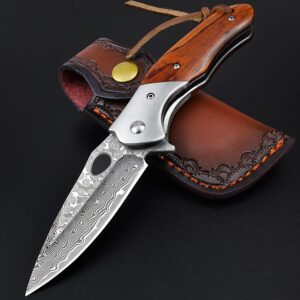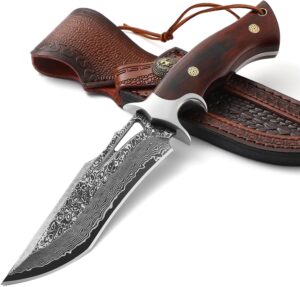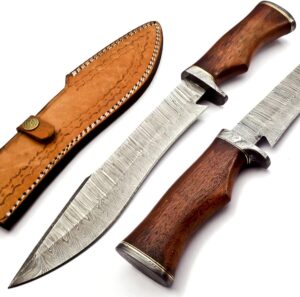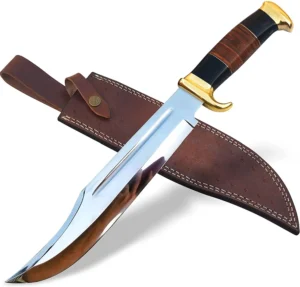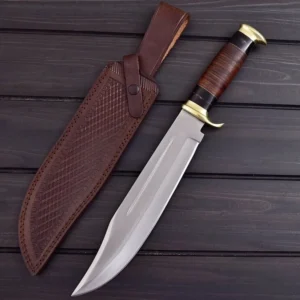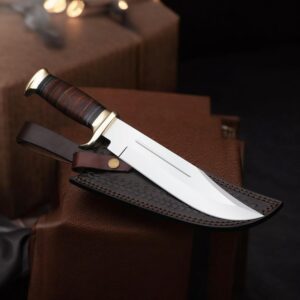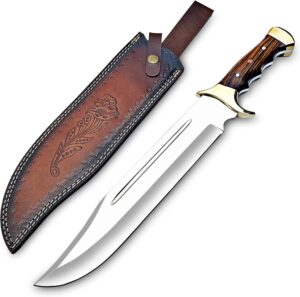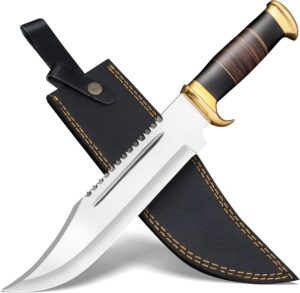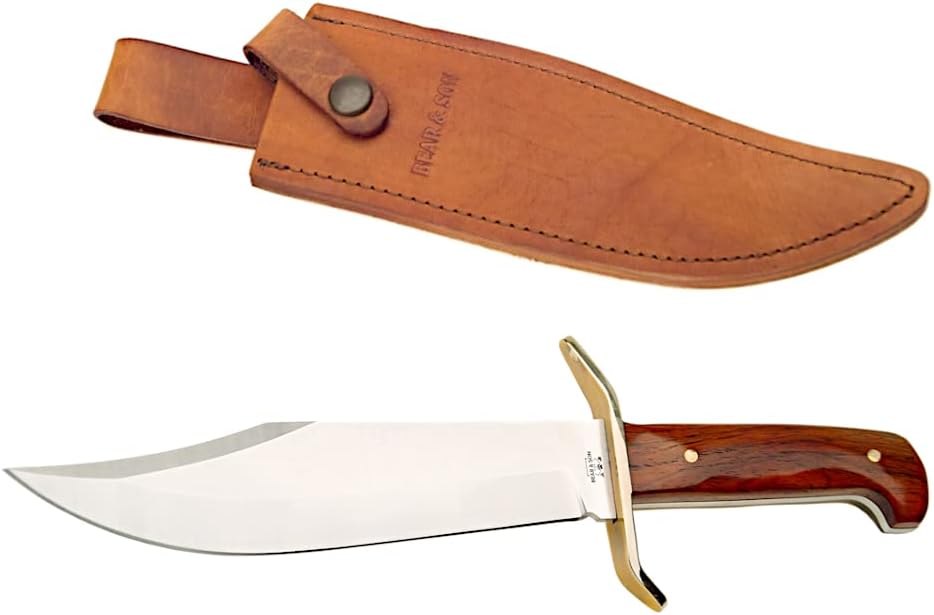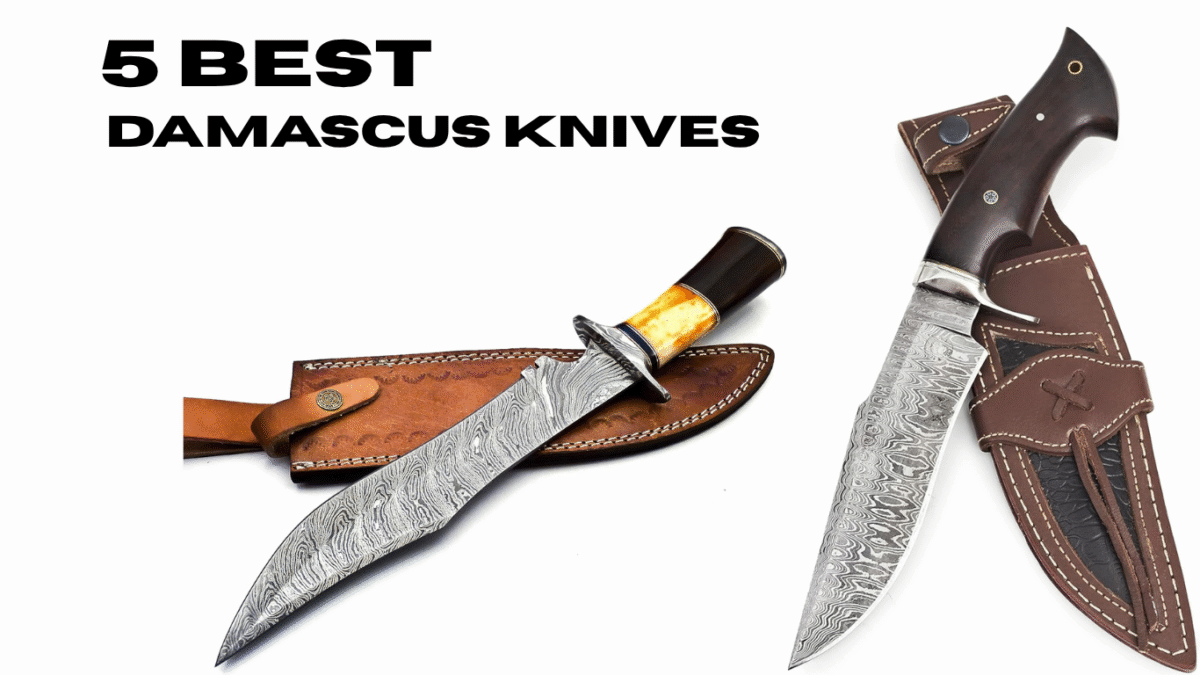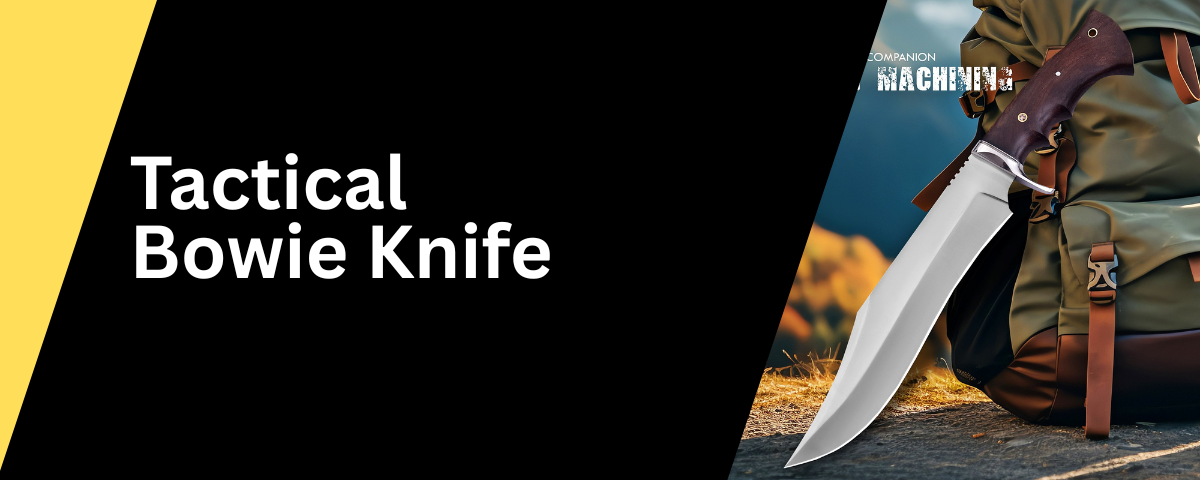Bowie knives have long captured the imagination of historians, collectors, and outdoor enthusiasts alike. Their storied past, distinctive design, and cultural significance make them a subject of enduring interest. This comprehensive guide delves into the origins of the Bowie knife, the life of Jim Bowie, its unique design features, legal considerations, and a comparison with the Kukri knife.
The Origins and History of the Bowie Knife
The Bowie knife's inception is deeply rooted in early 19th-century American history. Its name derives from James "Jim" Bowie, a frontiersman whose prowess with the blade became legendary. The knife gained widespread recognition after the infamous Sandbar Fight on September 19, 1827, near Natchez, Mississippi. During this violent encounter, despite being shot and stabbed, Bowie used a large knife to kill his opponent, Norris Wright, showcasing the weapon's effectiveness in combat. Witnesses described it as a "large butcher knife," emphasizing its formidable presence.
The original design is attributed to Rezin P. Bowie, Jim's brother, who commissioned blacksmith Jesse Clift to create a hunting knife for Jim's protection. This early version resembled a butcher knife with a straight back, lacking the clip point and crossguard seen in later iterations. As its reputation grew, the Bowie knife became a sought-after weapon, leading to various adaptations by blacksmiths and cutlers across the United States and England.
Jim Bowie and His Legacy
Jim Bowie, born in 1796, was a frontiersman whose name became synonymous with the knife that defined an era. His early life was marked by land speculation and involvement in various frontier exploits. However, it was the Sandbar Fight that cemented his legendary status. Despite sustaining severe injuries, Bowie's resilience and combat prowess showcased the effectiveness of his knife, elevating both him and the weapon to near-mythical status.
Bowie's fame continued to rise, and he eventually moved to Texas, where he played a significant role in its fight for independence from Mexico. He perished at the Battle of the Alamo in 1836, but his legacy endured, with the Bowie knife becoming a symbol of frontier spirit and tenacity.
Distinctive Design and Features
The Bowie knife is renowned for its unique design elements that distinguish it from other blades. Key features include:
- Blade Length and Shape: Typically, the blade ranges from 8 to 12 inches in length, with a relatively broad profile, often 1.5 to 2 inches wide. Early versions had a straight back, but later designs introduced the clip point—a concave curve near the tip—that enhanced the knife's piercing capabilities.
- Clip Point: This feature brings the tip lower than the spine, aligning it with the handle for better control during thrusting. The clipped portion may have a false edge, sometimes sharpened, facilitating back cuts.
- Crossguard: Many Bowie knives incorporate a crossguard, often with an upper guard that bends forward at an angle (an S-guard), designed to protect the user's hand and potentially catch an opponent's blade.
- Handle Materials: Handles have been crafted from various materials, including wood, bone, horn, and ivory. Some feature ornate designs with silver or brass fittings, reflecting the knife's evolution from a utilitarian tool to a status symbol.
These design elements contribute to the knife's versatility, making it suitable for combat, hunting, and general utility tasks.
Types of Bowie Knives
1. Traditional Bowie Knife
The classic best Bowie knife features a clip-point blade, brass guard, and wooden handle. This traditional design remains a favorite among collectors, historians, and outdoor enthusiasts. The brass guard enhances grip security, preventing accidental slips, while the wooden handle, often made from hardwoods like walnut or rosewood, provides both durability and a comfortable grip. The traditional Bowie knife is well-balanced and highly functional for tasks such as hunting, skinning, and general utility work. It is also revered for its historical significance, often being seen as a collector’s piece.
2. Modern Tactical Bowie Knife
Designed for military and tactical use, modern Bowie knives incorporate several advanced features that make them more suited for rigorous applications. These include:
- Serrated Edges – Useful for cutting through tough materials like rope, fabric, and even light metal.
- Synthetic Grips – Made from materials like G-10, rubber, or polymer for enhanced grip and durability in extreme weather conditions.
- Coated Blades – Often coated with black oxide or titanium nitride to improve corrosion resistance and reduce light reflection for tactical stealth.
Modern tactical Bowie knives are designed to handle intense fieldwork, survival scenarios, and self-defense. They often feature reinforced spines and a more aggressive point for improved penetration and combat effectiveness.
3. Custom and Handmade Bowie Knives
Many skilled knife makers craft custom Bowie knives, offering a unique blend of artistry and performance. These knives often incorporate:
- Damascus Steel Blades – Known for their intricate wave patterns and exceptional sharpness.
- Personalized Handles – Made from premium materials such as stag horn, exotic hardwoods, or even fossilized ivory.
- Intricate Engravings – Custom Bowie knives frequently feature hand-engraved designs and inlaid gemstones to enhance their aesthetic appeal.
These knives are highly sought after by collectors, hunters, and enthusiasts who appreciate both the craftsmanship and functionality of a well-made blade. Whether for display, heirloom collection, or practical use, a custom Bowie knife offers unparalleled quality and uniqueness.
Choosing the Right Bowie Knife
When selecting a Bowie knife, consider the following factors:
- Intended Use – Choose a model that suits your needs, whether for hunting, survival, or self-defense.
- Blade Material – Opt for a material that balances edge retention, durability, and ease of maintenance.
- Handle Comfort – Ensure the handle provides a secure grip, reducing hand fatigue during extended use.
- Blade Length – Shorter blades (6-8 inches) offer more control, while longer blades (10-12 inches) provide extended reach.
Laws and Regulations Surrounding Bowie Knives
Due to their size and historical association with dueling and combat, Bowie knives are subject to various legal restrictions worldwide. In the United States, laws regarding the possession, carry, and use of Bowie knives vary by state and locality. Some jurisdictions prohibit carrying Bowie knives concealed, while others have outright bans on their possession. It's essential for enthusiasts and collectors to familiarize themselves with local laws to ensure compliance and avoid legal complications.
Internationally, regulations also differ. Some countries classify Bowie knives as prohibited weapons, restricting their import, sale, and possession. Travelers should exercise caution and research the specific laws of any country they plan to visit to avoid legal issues.
Bowie Knife vs. Kukri - A Comparative Analysis
When comparing the Bowie knife to the Kukri, a traditional Nepalese blade, several distinctions emerge:
Design and Structure
Bowie Knife: Features a straight or clipped point blade, typically ranging from 8 to 12 inches, with a crossguard for hand protection.
Kukri: Characterized by its distinct forward-curving blade, usually between 10 to 15 inches, lacking a crossguard.
Functionality:
Bowie Knife: Versatile for both stabbing and slicing, suitable for combat and utility tasks.
Kukri: Excels in chopping due to its weight-forward design, making it effective for clearing vegetation and as a combat weapon.
Cultural Significance:
Bowie Knife: An emblem of American frontier history, associated with figures like Jim Bowie and events such as the Alamo.
Kukri: Deeply rooted in Nepalese culture, symbolizing the valor of the Gurkhas, renowned for their military prowess.
Both knives have earned legendary statuses in their respective cultures, each embodying unique design philosophies tailored to their intended uses.
Conclusion
The Bowie knife stands as a testament to innovation and adaptability, evolving from a frontier weapon to a multifaceted tool cherished by collectors and outdoorsmen alike. Its rich history, distinctive design, and cultural significance ensure its place in the annals of edged weaponry. Whether drawn to its storied past or its practical applications, enthusiasts continue to celebrate the enduring legacy of the Bowie knife.


